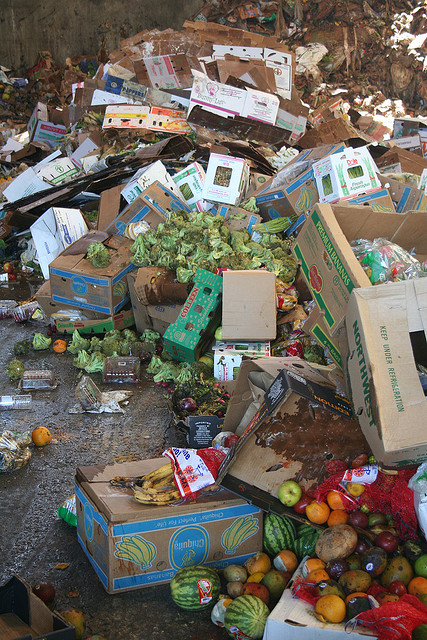The following post by IFPRI Director General Shenggen Fan was originally published on his DG Corner blog.
The holiday season is just over. In the past few weeks, numerous families around the globe filled their plates with holiday-themed food and consumed in merriment, but also discarded a lot of food. Many people are now thinking of New Year resolutions, such as shedding the extra pounds gained from eating at various festivities. A good resolution could be to contribute to reducing food loss and waste on a global scale. This, however, goes beyond finishing the food on our plates.
The world as a whole has not done a good job at saving food. According to the FAO, 32 percent of all food produced in the world was lost or wasted in 2009. When converted to calories, one out of every four calories intended for consumption is ultimately lost or wasted.
Food loss and waste occur in every country around the world—in developing countries, food loss occurs mainly during the processing and storage stage of food production due to, for example, lack of cold storage facilities and post-harvest handling that lead to spoilage. In Africa south of the Sahara, Latin America, North Africa, South and Southeast Asia, and West and Central Asia, 10-20 percent of fruits and vegetables are lost at the production stage. In developed countries, food waste, which occurs mainly at the retail and consumption stage, is a larger problem. For example, in Europe and North America and Oceania, 19-28 percent of fruits and vegetables are wasted at the consumption stage. Fruits and vegetables have the highest loss and wastage rates of any food products.
The economic implications are high. In Africa south of the Sahara, for example, poor post-harvest handling of grains is estimated to amount to US$4 billion in losses annually. Food loss and waste reflect poorly functioning food value chains as a result of inefficient use of resources. Further, it puts pressure on the food system by straining natural resources, ultimately exacerbating hunger and malnutrition. Take China as an example: The country houses a large number of the world’s hungry (150 million), yet annually the amount of food necessary to feed 200 million is lost (about US$32 billion). Half of the 72.5 million tons of food imported from January to October of 2014 was lost due to poor storage and transportation.
Reducing food loss and waste can help improve availability and access to both food staples and more perishable, nutrient-rich foods. It is thus a pathway to end hunger and undernutrition. How can we do this?
One way is for governments to re-prioritize investments. Governments could reduce subsidies on the production of staple grains (as well as water, electricity, and fertilizers). Those savings could then support the production of more nutrient-rich crops, such as fruits and vegetables, via investments in R&D, and improve the marketing chains of these more perishable crops. The use of cold storage facilities in India and Bangladesh, for example, has been found to increase potato prices for farmers during the off-season, while reducing food loss. The removal of such subsidies, however, may cause food prices to increase with negative implications for poor producers and consumers. In such situations, strong social safety nets must be put in place to protect the poor and ensure that they continue to consume nutritious (not calorie-rich) food. Another pathway is to promote the right prices of food and natural resources that fully reflect costs to the environment and climate. This will encourage sustainable production and consumption practices.
Equally important is the need to increase consumer awareness. China, for example, launched the “Clean Your Plate” campaign in 2013 to educate consumers on good consumption practices in a bid to curb food waste. As I mentioned in a recent op-ed, this is a laudable step for China. However, consumers in China and elsewhere should also be educated on best practices in safe food storage and package dating as well as societal benefits of reducing food waste. Further, retailers should be discouraged from wasting food due to unnecessary standards of color, shape, and size of foods, particularly fruits and vegetables.
Addressing hunger and undernutrition by reducing food loss and waste will require a comprehensive approach that extends beyond the age-old advice to “clean our plates.” As we begin the New Year, let us consider this resolution.







